
The Person Who Made Weather
During the super-hot summer days, let’s take a moment to say thanks to Willis Carrier. He’s the one who came up with the idea for the cool air machines we use today.
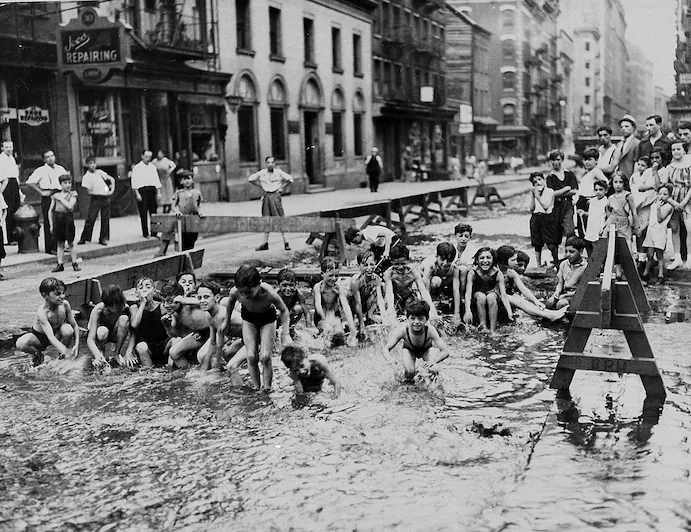
In the scorching summer of 1901, it was incredibly hot in the eastern United States, with some records that still hold today. St. Louis, in particular, endured a brutal heatwave. For almost seven weeks, the temperature stayed above 32 degrees, except for just three days. There were 15 days when it reached 37 degrees or even hotter, including a terrible four-day stretch where it was at least 41 degrees.
Back then, there was no air conditioning, and electric ceiling fans were a new invention. People suffered a lot. To help those in need, the St. Louis Post-Dispatch asked its readers for donations and used the money to provide ice to the poor from refrigeration plants at the city’s breweries.
Still, many people in St. Louis lost their lives, and it’s estimated that 9,500 people died from the heat across the country. Crops dried up, and factories had to shut down to protect workers from collapsing.
Now, in 2023, there’s a lot of talk about this summer being unusually hot due to global warming and the recurring “El Niño” weather pattern. But as we can see from the heatwave of 1901, extremely hot summers have been a problem for a long time, especially in the southern United States. Luckily, one man came up with a solution that made life more comfortable in the summer: Willis Carrier, the inventor of modern air conditioning.
In 1902, when he was just 25 years old, Carrier created the cooling system that eventually became what we now know as air conditioning. But he didn’t stop there. He also developed the theory behind air conditioning, started the first air conditioning manufacturing company, which still bears his name, and worked to make air conditioning accessible to everyone in the 1930s and ’40s.
His invention was just one of many groundbreaking innovations that greatly improved human life during a time when science and industry were changing everyday life rapidly. Carrier’s story is especially relevant today, as we grapple with hot summers, but it’s also a small part of the larger wave of innovation that shaped our world.

The Science of Comfort
Before Willis Carrier, air cooling existed, with early systems resembling a fan blowing air over ice. The Auditorium Theater in Chicago in 1889 even imported tons of ice for its ventilation system.
However, this method had a drawback – it added humidity. This was a problem for companies like Sackett & Wilhelms Lithographing and Printing Company. They hired Willis Carrier, a recent engineering graduate, to create a system that not only cooled the air but also removed humidity.
Carrier’s breakthrough was realizing that air-conditioning needed to control both temperature and humidity. He patented his device in 1906 and continued to improve it.
He went further, developing a sub-science. In 1911, he presented “Rational Psychrometric Formulae,” explaining the science of temperature, humidity, and comfort.
In 1915, he founded Carrier Engineering Corporation with young engineers. Air-conditioning first appeared in movie theaters, offering comfort in the 1920s.
In 1939, Carrier promoted air-conditioning at the New York World’s Fair. Adoption was slowed by the Great Depression and World War II. In 1945, Life magazine predicted affordable home air-conditioning.
Carrier passed away in 1950, just as air-conditioning started reaching homes. By the 1970s, it became common, with more people having it than dishwashers today.
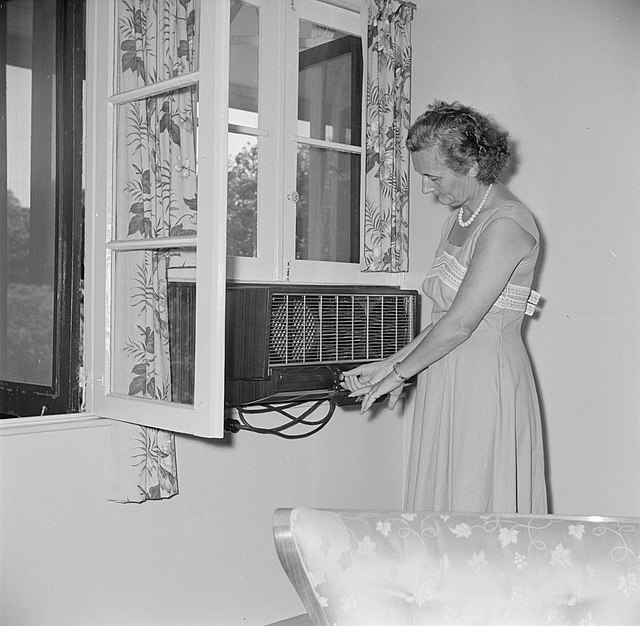
The Age of Innovation
The dishwasher, as we know it today, came about in 1886 thanks to Josephine Cochran, who wasn’t trying to make life easier but wanted to prevent dishes and glasses from breaking. Her early customers were hotels and restaurants who liked this idea.
The late 1800s is sometimes called the “Gilded Age.” During this time, American capitalism was booming, and a lot of innovative things were invented. For example, the camera (by George Eastman in 1884), the vacuum cleaner (developed by various people, including Melville R. Bissell in 1876 and department store janitor James Murray Spangler, who sold his patent to William Henry Hoover in 1908).
And, of course, there’s Thomas Edison, a famous inventor. This period saw many young engineers and inventors from all walks of life making incredible discoveries. Willis Carrier, who grew up on a farm and worked his way through engineering school, was one of them. He was part of an exciting time when innovation and business were improving all aspects of life.
Air-conditioning didn’t just make people more comfortable; it also boosted productivity, especially in the southern United States. Studies have shown that people work best at around 21 degrees. Plus, for every degree closer to the tropics, people’s average income drops by about 8.5%. Extreme heat makes physical and mental work slower and more challenging.
Air-conditioning not only made working conditions better but also encouraged people to move and work in warmer places. This wasn’t just true in America; think about big cities like Singapore, which grew and thrived thanks to air-conditioning.
Lastly, air-conditioning has saved many lives, especially among older people, during heatwaves. A study from 2012 found that the number of deaths on days with temperatures over 80°F dropped by 75% after 1960. The widespread use of residential air conditioning is the main reason for this decline.

Acts of Kindness Are Met with Challenges
In this remarkable era of technological and economic advancement, there are those who tend to spot drawbacks even in the most positive developments. Air-conditioning, a true lifesaver, has come under scrutiny due to its substantial electricity consumption, leading some environmentalists to view it with suspicion.
Nowadays, air-conditioning is seen as ethically problematic. While it rescues us from scorching heat, some argue that it contributes to the very heat it combats by adding to global warming.
Consider, however, the people who endured the 1901 heatwave. Extreme heat has always posed a challenge, and even if we acknowledge the concerns about global warming, who says air-conditioning must rely on fossil fuels?
The fact that certain environmentalists oppose air-conditioning rather than advocating for cleaner energy sources like nuclear power suggests that there’s a faction within the environmental movement that opposes anything that enhances human happiness and comfort.
This opposition reflects an age-old anti-humanist sentiment, reminiscent of Puritanism. In 1945, the same year Life celebrated the dawn of home air-conditioning, Henry Miller wrote a book describing America as “The Air-Conditioned Nightmare.”
He criticized our “cheap cars and gadgets” and lamented that “nowhere else in the world is the divorce between man and nature so complete.” But in the midst of a heatwave, most of us would seek separation from such a marriage.
I recall an old TV commercial, possibly for Carrier, showing a television weatherman presenting a national forecast. Throughout the country, the temperature was the same: a comfortable 22 degrees, a concept of modern living made possible by central heating and air-conditioning. Willis Carrier, quite literally, allowed us to create our own climate.
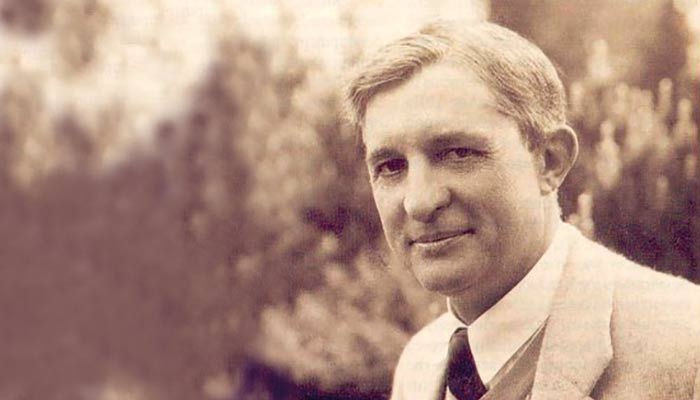
As you find relief in the cool embrace of your air-conditioned haven on the hottest summer days, take a moment to express your appreciation for the pioneer of modern air-conditioning, Willis Carrier. And perhaps, alongside that gratitude, consider extending your thanks to the framework of freedom and innovation that paved the way for his remarkable accomplishment.
Never miss any important news. Subscribe to our newsletter.
Related News


British Investor Who Predicted US Slump Warns of Next Crash

I’m a Death Doula: 4 Reasons I Believe Death Isn’t the End
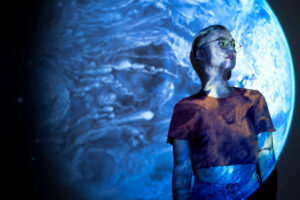
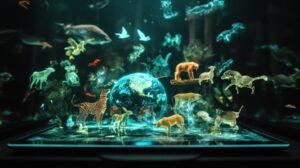
Tech to Reverse Climate Change & Revive Extinct Species

AI Unlocks the Brain’s Intelligence Pathways
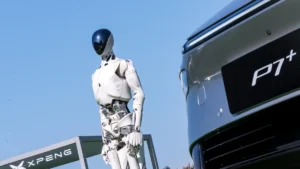
XPENG Unveils Iron Robot with 60 Human-like Joints

Can AI Outsmart Humanity?

11 ChatGPT Prompts to Boost Your Personal Brand

Keir Starmer Hints at Possible Tax Hikes on Asset Income

Navigating the Future of AI: Insights from Eric Schmidt
